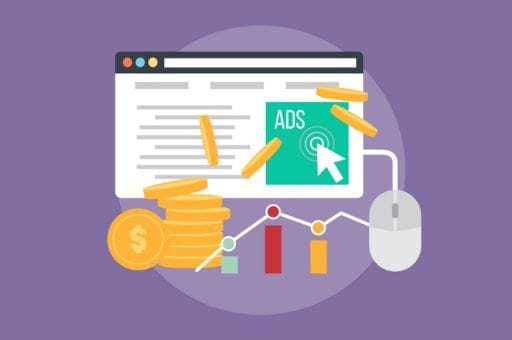Do you want to expand globally and connect with potential clients in foreign markets? Then multilingual PPC should be an integral part of your localization and digital marketing strategy.
Paid advertising—whether through Google Ads, Bing, LinkedIn, or Meta – offers unmatched opportunities to reach audiences at the moment they’re searching for solutions. But in global markets, success depends on your ability to communicate clearly and persuasively – in the user’s own language and cultural context.
This article explores how to plan, localize, and optimize multilingual PPC campaigns that drive real results – clicks, conversions, and ROI.
What Is Multilingual PPC?
Multilingual PPC is the practice of running paid advertising campaigns in multiple languages, targeting users based on their native language, cultural background, and geographical location.
It’s not just about switching languages. True multilingual PPC combines:
Localized ad copy crafted for each market
Keyword research in the target language
Platform-specific strategies that reflect regional behavior
Landing page adaptation
Consistent performance tracking across languages
For example, users in Germany might respond to formal, informative ads, while users in Brazil may prefer a casual, upbeat tone. Multilingual PPC addresses these nuances to improve engagement and performance.
Why Invest in Multilingual PPC?
If your goal is to scale internationally or reach multilingual audiences at home, multilingual PPC offers distinct advantages:
Global reach with local relevance: Speak directly to your customers in their preferred language.
Lower competition and CPC: In many local markets, competition is less intense than in English-only campaigns.
Improved ad quality scores: Localized ads typically receive higher relevance ratings, which lower costs and boost visibility.
Higher conversion rates: Ads and landing pages that match users’ language and expectations convert better.
Enhanced brand credibility: Localization signals professionalism and respect for your audience’s culture.
Multilingual PPC isn’t just a translation project – it’s a business growth strategy.
Expert Tips for Effective Multilingual PPC Campaigns
Translate less. Localize more. That’s the foundation of a successful multilingual paid campaign. Here are essential principles to follow:
Start with Audience and Market Research
Before launching in a new market, understand:
Who is your target audience?
What’s the typical search behavior?
What tone and messaging styles resonate?
What cultural sensitivities must be respected?
Each region has unique user behavior, even within the same language group. For instance, Spanish speakers in Spain and Latin America respond to different terminology and tone.
Choose the Right Platforms
While Google Ads is the global leader in paid search, your platform strategy should follow your audience. Depending on region and demographic:
Google Ads: Global standard for search and display
Microsoft Ads: Particularly strong in North America and select European markets
Meta (Facebook/Instagram): Ideal for visual or consumer-focused campaigns
LinkedIn Ads: Effective for B2B and professional services
YouTube: For brand awareness and video engagement
Use platform-specific targeting features, such as location + language filters and device preferences, to narrow your reach effectively.
Conduct Keyword Research in the Target Language
Never translate keywords directly. Local users often search using phrases that differ significantly from their English counterparts.
Use native-language tools like:
Google Keyword Planner (in local settings)
SEMrush or Ahrefs (set to region/language)
Search engine autocomplete and “related searches”
Local competitors’ keyword sets
Pay attention to search intent, not just search volume.
Collaborate With Native-Speaking Marketers
Professional translation is a start – but PPC demands more. Work with native-speaking marketers or transcreators who understand:
Advertising tone and style
Platform character limits
Local idioms and persuasive CTAs
The goal is not just clarity but conversion. A poor translation may be grammatically correct but fail to drive action.

Adapt the Entire Funnel, Not Just the Ad
Consistency across the ad funnel is critical. If users click on a localized ad but land on an English page, they will likely leave.
Ensure that:
Landing pages are fully localized, including visuals, forms, and currency
The tone and messaging match the ad
Legal disclaimers and data privacy notices are compliant with local regulations
Even subtle mismatches can reduce trust and harm conversion rates.
Don’t Overlook Negative Keywords and Match Types
In multilingual campaigns, negative keywords and match types require just as much localization as your primary keyword list.
What terms could be misleading or irrelevant in the local language?
How do pluralization and synonyms behave in that language?
Are there culturally sensitive phrases to exclude?
Local input from linguists can prevent costly mistakes.
Structure Campaigns by Language and Market
Avoid mixing multiple languages in one campaign or ad group. Instead:
Create separate campaigns per language + market
Customize bidding, scheduling, and budget allocation
Track KPIs by language for granular performance insights
This makes reporting clearer and optimization more effective.
Localize Ad Extensions and Display URLs
Many marketers localize headlines and descriptions but forget about:
Sitelinks
Callouts
Structured snippets
Display paths
Every visible part of your ad contributes to click-through and trust. Don’t leave any English placeholders in an otherwise localized experience.
Test Continuously, Per Market
Just like in your primary market, multilingual PPC campaigns require ongoing testing:
A/B test multiple ad versions in each language
Try different CTAs, offers, and tone variations
Monitor CTR, Quality Score, CPC, and conversion rate by market
What works in France may fail in Italy – so test locally.
Common Mistakes in Multilingual PPC
Even experienced marketers stumble when it comes to international paid campaigns. Avoid these pitfalls:
Using Google Translate or other automated tools for ad copy
Failing to test translated versions for character limit issues
Mixing languages in one ad group
Ignoring cultural context, e.g., formal vs. informal tone
Not adapting landing pages or user flow
Skipping in-language negative keywords
Failing to track performance separately for each region/language
The Value of a Professional Language Partner
Managing multilingual PPC internally requires linguistic skills, digital marketing expertise, and cultural awareness. Most in-house teams lack the capacity to do it all.
At Skřivánek, we support your global growth through:
In-market keyword research
Ad copy transcreation by PPC-savvy linguists
Landing page localization
Native QA and performance review
Support for over 110 languages
Compliance with ISO 9001, ISO 17100, ISO 27001
We don’t just translate – we make your PPC campaigns perform.
Conclusion
Multilingual PPC campaigns are one of the most cost-effective ways to reach new markets. But success requires more than translation. It demands strategic localization, platform knowledge, and native insight.
Done right, multilingual paid search and display advertising can:
Expand your reach
Improve campaign efficiency
Build trust and recognition in new markets
Whether you’re targeting Europe, Asia, or Latin America, let your brand speak clearly and persuasively in every language.
